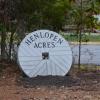‘First Settler’ dives into history of Fourth Street Preserve
Thirty-five years ago, Lewes was just emerging from its long, quiet slumber as a maritime port, fish products capital and small farming region. In 1990, 2,300 people lived in Lewes, many direct descendants of very old local families. The downtown area with seven churches, three of those African American, was surrounded by farms. Only one community with newer homes had recently been built, just outside the city limits.
Today, more than 11,000 people, mostly retirees, live here: 3,550 in town, the rest in new upscale communities tightly encircling Lewes, where housing for another 7,500 will soon be built. Thousands more are relocating to new homes up to five miles inland. All consider Lewes their home.
Almost all the farmland is gone. Within Lewes’ city limits, one thirty-acre wooded parcel remains. When the Greater Lewes Foundation was offered the opportunity to save the Fourth Street Preserve, our board was not yet aware of this parcel’s history as the first officially deeded land in Lewes. That deed was assigned on May 25, 1670, by James Stuart, Duke of York, to Helmanias Wiltbanck. Wiltbanck is widely acknowledged as Lewes’s first settler. His descendants owned, lived on and farmed the Preserve through five generations.
Incredibly, both by chance and intent, the original core of the Preserve has remained intact for 355 years, through several periods of growth and development, none as dramatic as what is occurring now. Today, the Preserve’s original 1,155 feet of frontage behind nine homes on Pilottown Road, above the Lewes-Rehoboth Canal, remains the same width as when it was deeded. So do thirty of the 100 acres of forested land that once swept one mile back to Canary Creek.
This history of the Fourth Street Preserve and of those who owned it focuses on three families who were the principal stewards of this historic property for 312 of the past 355 years: the Wiltbancks, the Wests and the Rollinses.
The arrival in Lewes of the first family, the Wiltbancks, has been recounted in numerous tales. The most popular version has them shipwrecked on the shoals of Cape Henlopen, then floating ashore on a sea chest. Variations include Helms Wiltbanck saving a young girl whose parents drowned while swimming with his prized silver pocket watch in his mouth – or his pocket. Another has the family surviving a shipwreck several years earlier, during their arrival from Holland at the port of New Netherland (New York). For the purposes of this book, we have the Wiltbancks arriving in Lewes in a less dramatic way. The challenges they will face over the next fifteen years will be more than enough for any family to handle.




















































